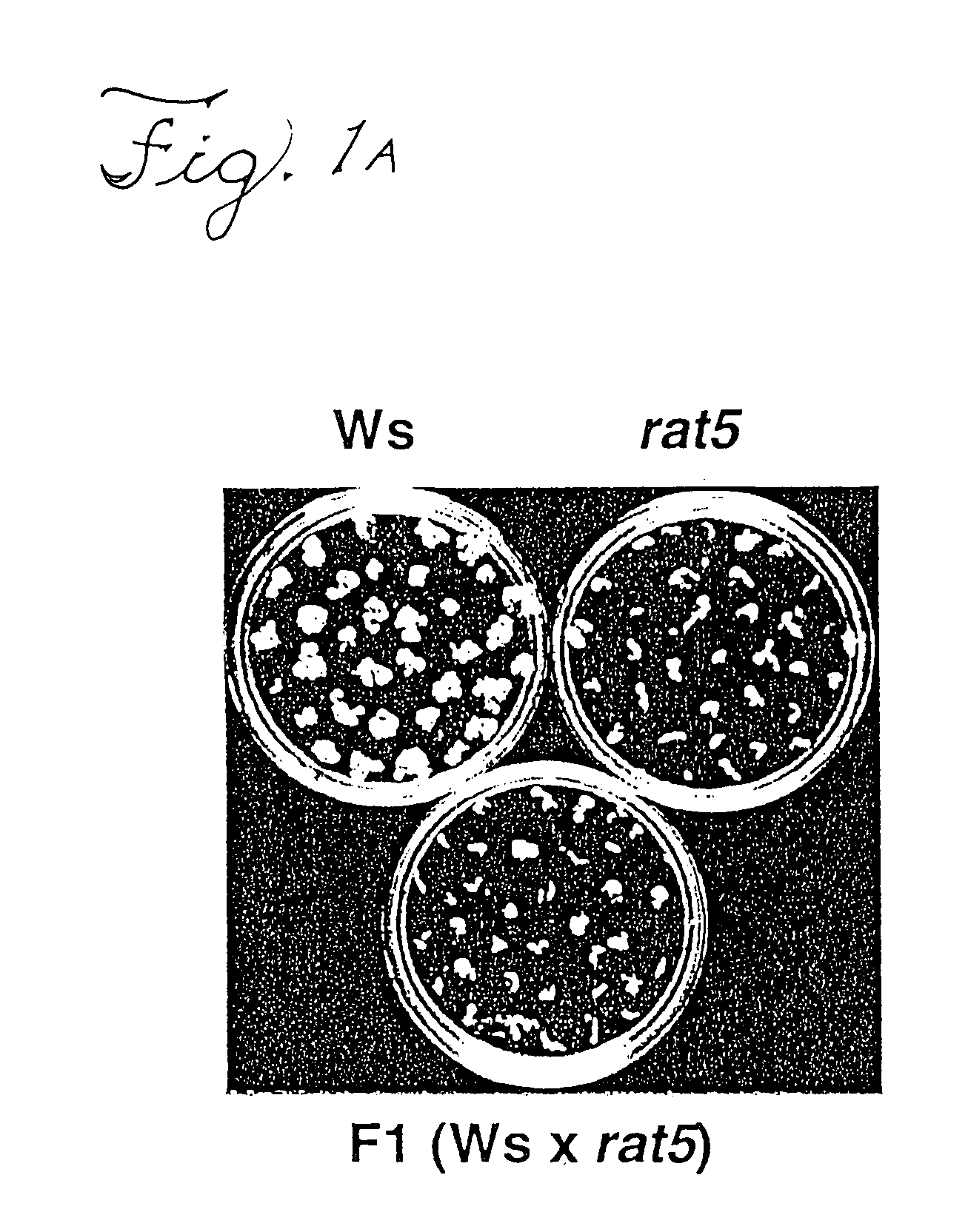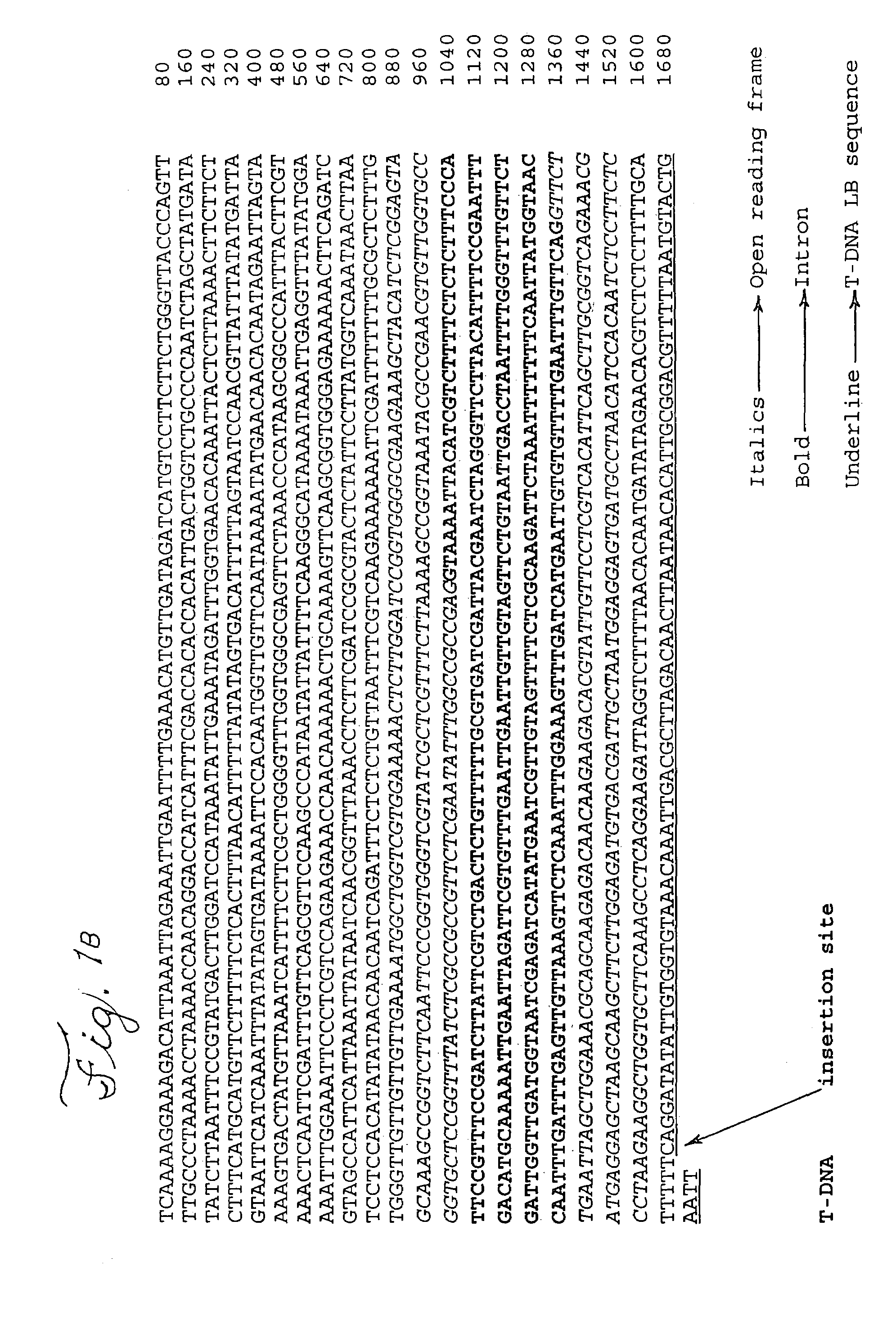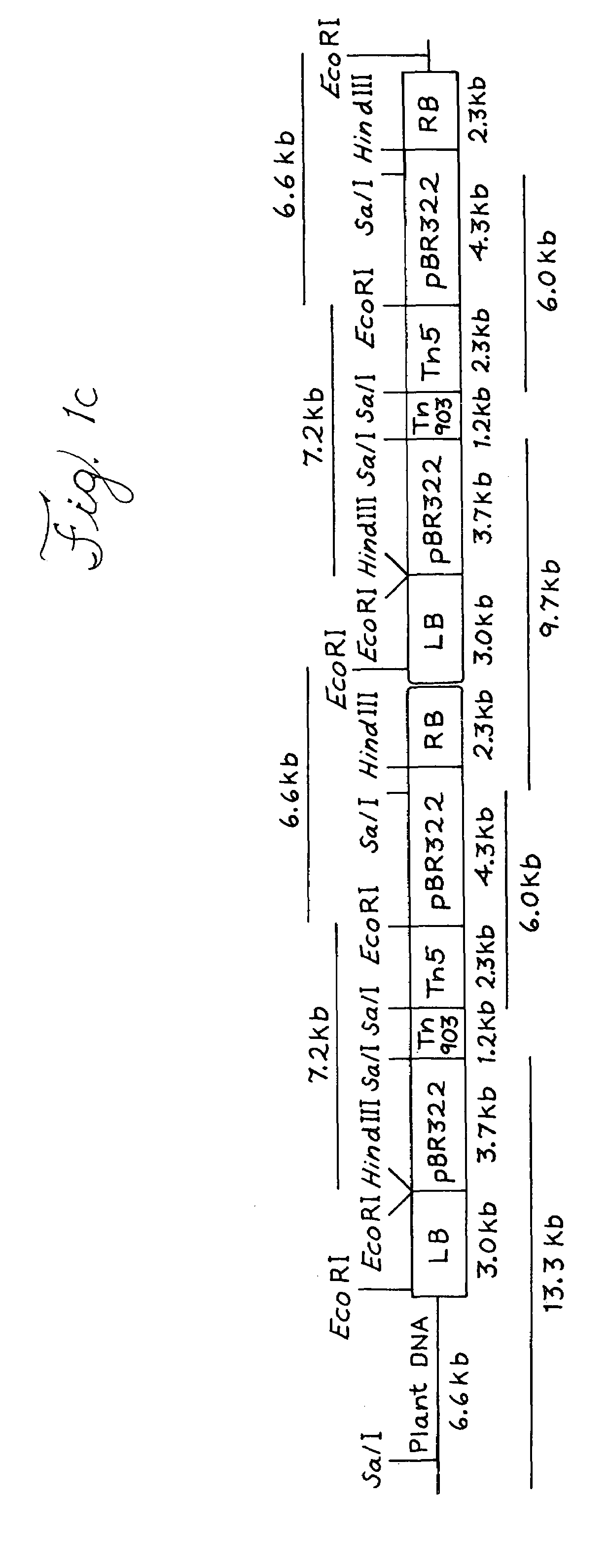Enhanced plant cell transformation by addition of host genes involved in T-DNA integration
a plant cell and host gene technology, applied in the field of enhanced agrobacterium transformation frequency of plants, can solve problems such as stably transformed, and achieve the effects of increasing agrobacterium transformation efficiency, enhancing transformation, and stably transformed
- Summary
- Abstract
- Description
- Claims
- Application Information
AI Technical Summary
Benefits of technology
Problems solved by technology
Method used
Image
Examples
Embodiment Construction
[0015]Several T-DNA tagged [plants which genes have randomly been disrupted by integration of a T-DNA] mutants of Arabidopsis were identified that are recalcitrant to Agrobacterium root transformation. These are called rat mutants (resistant to Agrobacterium transformation). In most of these mutants Agrobacterium transformation is blocked at an early step, either during bacterial attachment to the plant cell or prior to T-DNA nuclear import. In some of the mutants, however, the T-DNA integration step is most likely blocked. Because plant factors involved in illegitimate recombination of T-DNA into the plant genome have not previously been identified, the characterization of a T-DNA tagged Arabidopsis mutant, rat5, that is deficient in T-DNA integration, is an aspect of the present invention.
[0016]Characterization of the rat5 mutant. rat5, an Arabidopsis T-DNA tagged mutant, was previously identified as resistant to Agrobacterium root transformation. An in vitro root inoculation assa...
PUM
| Property | Measurement | Unit |
|---|---|---|
| volume | aaaaa | aaaaa |
| pH | aaaaa | aaaaa |
| pH | aaaaa | aaaaa |
Abstract
Description
Claims
Application Information
 Login to View More
Login to View More - R&D
- Intellectual Property
- Life Sciences
- Materials
- Tech Scout
- Unparalleled Data Quality
- Higher Quality Content
- 60% Fewer Hallucinations
Browse by: Latest US Patents, China's latest patents, Technical Efficacy Thesaurus, Application Domain, Technology Topic, Popular Technical Reports.
© 2025 PatSnap. All rights reserved.Legal|Privacy policy|Modern Slavery Act Transparency Statement|Sitemap|About US| Contact US: help@patsnap.com



